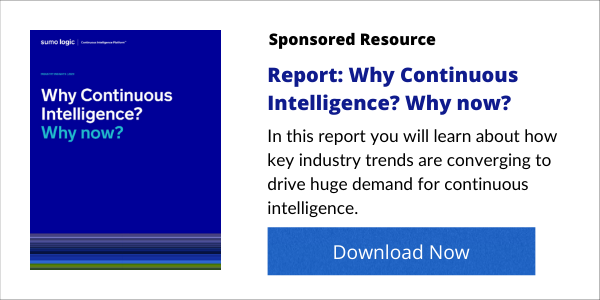
Success with enterprise intelligence requires a mix of technology, educational and cultural inititiatives across the organization.
The key to the future enterprise could be artificial intelligence, machine learning, data collection and management, continuous intelligence, or automation. Each has its expert advocates. Or, the key could be blending all those elements, and then some, to form an enterprise intelligence strategy.
That’s the message from research firm IDC, as outlined in a recent webcast. The discussion included Research Director Chandan Gopal and Group Vice President Dan Vesset. The pair outlined IDC’s new Enterprise Intelligence Index, which is based in part on a survey of 1,170 global organizations. That survey drew input on the data, infrastructure, and cultural approaches of those organizations. It also examined their associated business successes.
Gopal noted, “Think about the way we should think about the future of the enterprise. It’s why every executive should be focused on enterprise intelligence.”

“After the pandemic, the effect that became abundantly important is that enterprise intelligence is a driving factor for success for an organization to understand all the volatility and disruption,” she added.
What is enterprise intelligence
The IDC research highlighted four pillars for success in enterprise intelligence:
- Data culture. This centers on people, attitudes, values, goals, and social norms.
- Synthesis of information. This involves data exploration, strategy insights, domain insights, and market insights.
- Capacity to learn. This is where knowledge management, collective intelligence, and decision simulation and modeling come into play.
- Delivery of insights at scale. Think decision management, intelligent automation, data and model operations and governance, and distributed delivery of insights.
Gopal and Vesset put extra emphasis on that last pillar.
“A truly intelligent enterprise is making sure that insights are available throughout the organization, that they are pervasive,” said Gopal. She noted that the time has passed when data-driven insight was kept in the purview of a few executives or a department. Everyone who could find value in data should know where to find it when they need to make a decision.
Vesset painted the need for enterprise intelligence. “Increasingly there’s a realization that it’s not just about information access and information delivery in the form of dashboards and reports. Those are important but it’s not just about that. The responsibility is to deliver insights, metrics, and actionable information to everyone in the organization so they can make informed decisions.”
See Also: Continuous Intelligence Insights
Those pillars
Taking a closer look at the four pillars, the IDC team shared some of the key data points from the survey.
When asked about the most important areas for investment in building out enterprise intelligence, the most common answer (33% of respondents) was “training internal talent in data literacy”. Some of the other related points on that question included “infuse more intelligence into applications,” “invest in technology platforms,” “internal reorganization,” and “change processes and culture”. Together, those answers highlighted key elements needed for enterprise intelligence
On improving the capacity to learn, Gopal noted that knowledge management is “making a comeback. She sees the decades=old concept being enabled by AI and graph management techniques”. The lack of knowledge management became an issue during the pandemic. So many people were working remotely, it was difficult to know who knew what in the company, she said.
In the area of synthesis of information, IDC asked survey respondents how well their organizations can synthesize internal and external data into information. There was a response gap based on the nature of the respondent organizations. Those that described themselves as mostly centralized tended to be better at synthesizing data into information.
In sharing insights at scale, particularly through automation, the research indicated that two data-intensive industries reported the greatest success: life sciences and telecommunications.
Act and measure
But addressing those pillars isn’t enough. IDC said that efforts to improve on the four pillars critical to enterprise intelligence require metrics to measure success or failure on each. The research highlighted the differences between excellence and poor performance in the IDC index.
For example, 55% of organizations that rated as “excellent” under the index improved their time to market for products by at least 10%, compared with only 15% of the companies rated as “poor” at enterprise intelligence.
Fifty-one percent of “excellent” companies improved their employee retention rate by at least 10%, compared with 13% of “poor” companies. On revenue growth, 35% of “excellent” companies increased revenue growth by 10% or more, versus 13% of “poor” EI companies. On customer acquisition, 47% of “excellent” EI companies improved their rate by at least 10%, compared with 10% of the “poor” companies.







